I’ve gotten a lot of questions on how I read and study the bible recently, and trust me y’all, it’s been a process. For the last few years I’ve been in a state that makes it really hard for me to read and focus, let alone retain information. But reading, experiencing and really learning the Bible is so crucial to a personal walk with Jesus (since, ya know, He IS the Word- John 1 y’all, it’s a good one). So here I’m going to share some of my all time favorite tips + tricks to getting the most out of the Word and making it come alive.

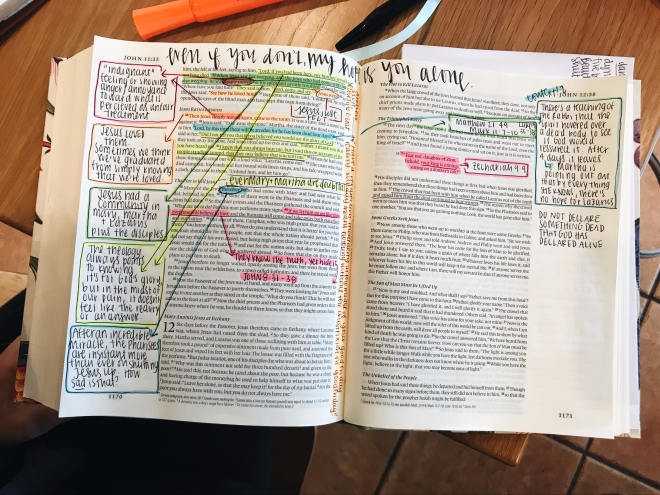
So maybe you’ve seen this “trend” floating around the internet and Social Media, but how do you actually get anything out of it and prevent it from becoming just artwork? Here’s what I’ve been digging-
First off, the Bible. Recently I’ve purchased a journaling Bible and I’m totally in love. This one is the Single Column Journaling Bible from Crossway in the Jungle print (you can find it in a similar pattern here, I got mine at Books-A-Million). I also have a standard, non-journaling bible that has double-column text, but the wide margins on the journaling Bible make writing much easier and less cramped. Both of my Bibles are the English Standard Version (ESV). I personally love ESV, but whatever you prefer works perfectly!
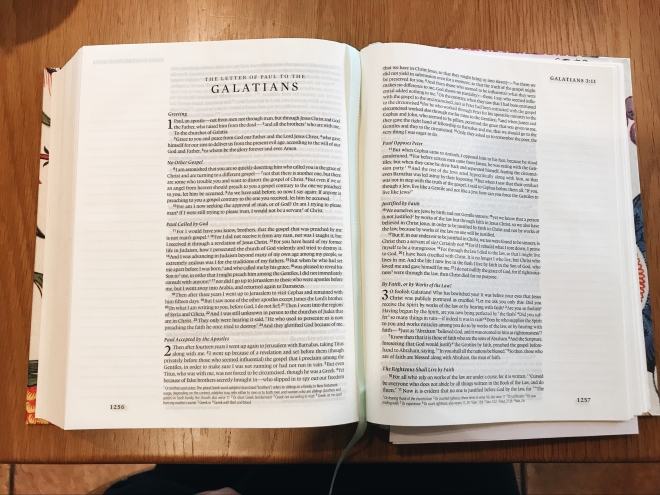
We’re going to work through Galatians 1. So here’s a blank page. Where to begin? I really love getting the historical context on the book or chapter I’m reading, so that I have a bit more background information to base my reading and notes on. Here, I noted that Paul, the author of the book is writing to the Galatians, or the church in Galatia- a north-central area of Asia Minor in the late 40s/50s AD. This historical context can come from pretty much anywhere, Google even. There are also great biblical commentaries such as the Matthew Henry version which I love. Search around for what you like best.
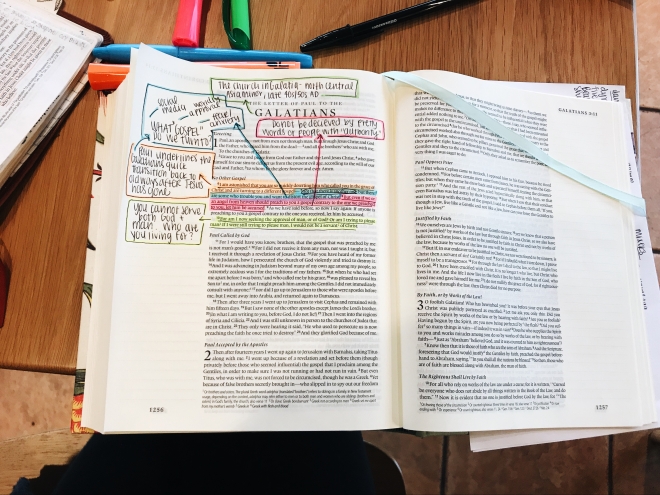
Then I take it apart verse by verse, taking notes and connecting the passage. When taking notes, I’ll underline a verse and draw an arrow to the note. Then I take a color highlight the verse and create a box around the note I made, as well as highlighting the arrow that connects the two. This process makes it easier to continue tracking my thought process as the page gets busier with more notes and thoughts.
My notes range from historical context to personal thoughts to questions (hypothetical and sometimes answered right there). It really can be ANYTHING, the key is to make it yours.
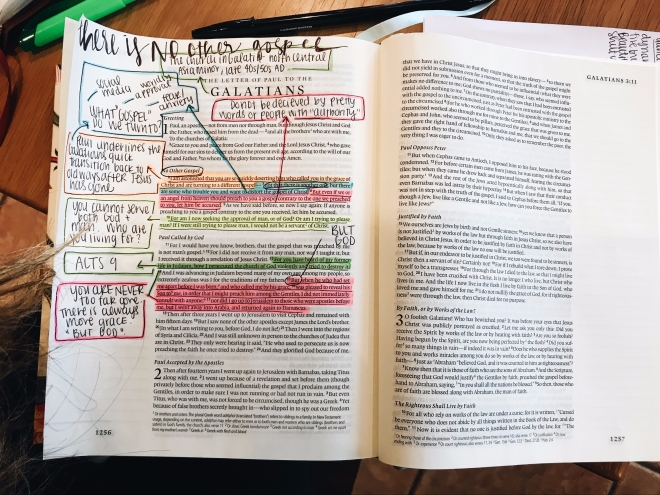
Another wildly helpful tip is to connect scripture as you recognize similarities and parallels. In Galatians 1:13, Paul writes, “For you have heard of my former life in Judaism, how I persecuted the church of God violently and tried to destroy it”. Here, I’ve highlighted that verse and noted “Acts 9”- the story of Saul being blinded and receiving the revelation of Jesus on the road to Damascus, turning into Paul. This truly helps in discovering how connected the word of God really is! Often times in the New Testament, the Scriptures in the Old Testament are referenced and noted in the footnotes. I’ll note those next to the verse as well, again, helping myself to understand prophecies being fulfilled and seeing scripture come together.
You can also see here that I’ll put in big letters on the top of the page the main theme of the page/book/chapter is that I’m reading. Galatians 1:6-7 makes it very clear that there is no other Gospel- only the gospel of Jesus Christ, however, in life sometimes we turn to the world and make other things our truth. So here I’ve put “there is no other Gospel” as the header as a reminder of that huge truth from this chapter.
Here’s some more examples from my journaling Bible, as well as what notes looks like in my regular Bible for some reference (:

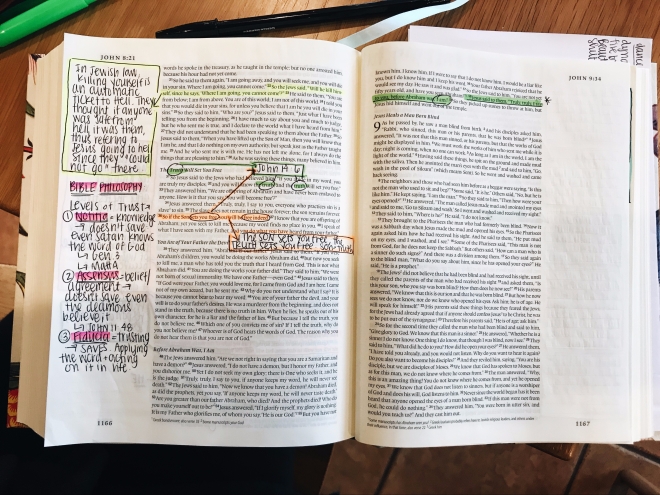
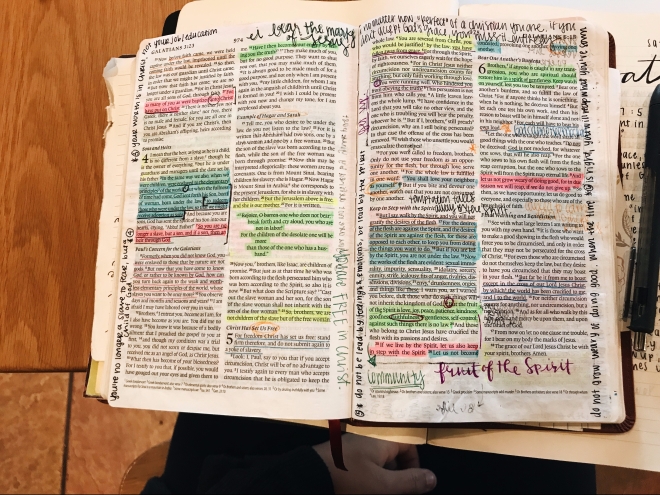

I have notebooks on notebooks. I’m one of those people that sits in church sermons scribbling down all the notes I possibly can (there’s so much goodness!!!!), and I’m constantly journaling. I’ve learned that journaling and note taking can be forms of art, processing, therapy, thinking and pretty much whatever else you need it to be. People hear from God in plenty of ways- pictures, music, nature, etc., but especially if you connect with God through words, this is a great thing for you.
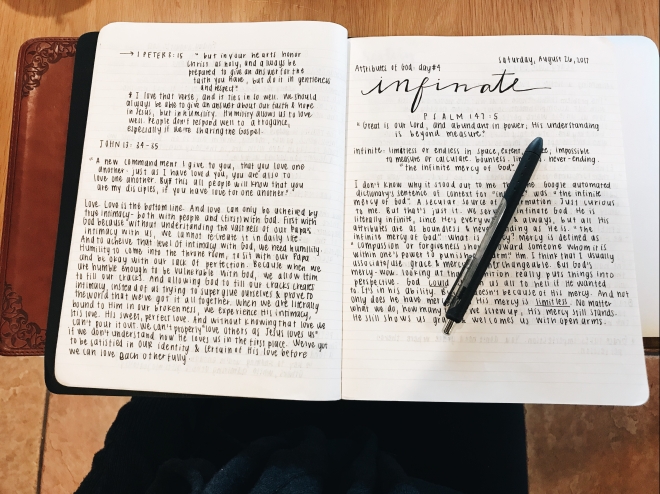
Here’s two examples of note taking that I use frequently. Both involve scripture, and both involve summary- it really just depends on what style works best for you. When studying multiple verses and really breaking it apart, I tend to lean towards the left side’s format- summarizing as I go, as well as really focusing on application near the end. On the right is a more daily style scripture study. This particular study I was doing focused on the attributes of God and the scriptures that went along with them. Here I focused on the definitions of each word and what it meant, as well as journaling about what that means to me.
Journaling and note taking are really just channels of creativity and tools to help you grow closer to God- don’t get caught up in the artwork or fancy calligraphy. Focus on you and Jesus talking it out like you’re having coffee. Trust me, it works WONDERS.

- Matthew Henry Commentary: HERE is the link to that commentary I mentioned above. Total life changer. This guy offers in depth, exhaustive commentary on every chapter of the Bible! WHAT UP, that’s awesome if you ask me.
- Crossway Books: HERE is the link to Crossway Books. Crossway has all kinds of resources, journaling and regular Bibles, as well as other Christian books. Check them out if you’re in need!
- I use the Moleskine journals- they’re pretty pricey for journals, but they’re awesome. You can also get them without lines, which is heaven for you right-brained, creative ones like me. But they come with lines too! And hardback or softback, what what! Really, you can use whatever journals your heart desires, but those are my favorites! You can get them on Amazon, at Target and at most bookstores too!
- If you haven’t heard of Jordan Lee Dooley, you need to. She’s amazing! She’s the brain behind SoulScripts as well as the “Sisterhood”, which costs only $7 per month- absolutely the best $7 I’ve ever spent! She’s got TONS of resources, Bible studies, mentoring videos and other amazing tools. There is also tons of free tools, as well as her YouTube channel- y’all should totally check it out!
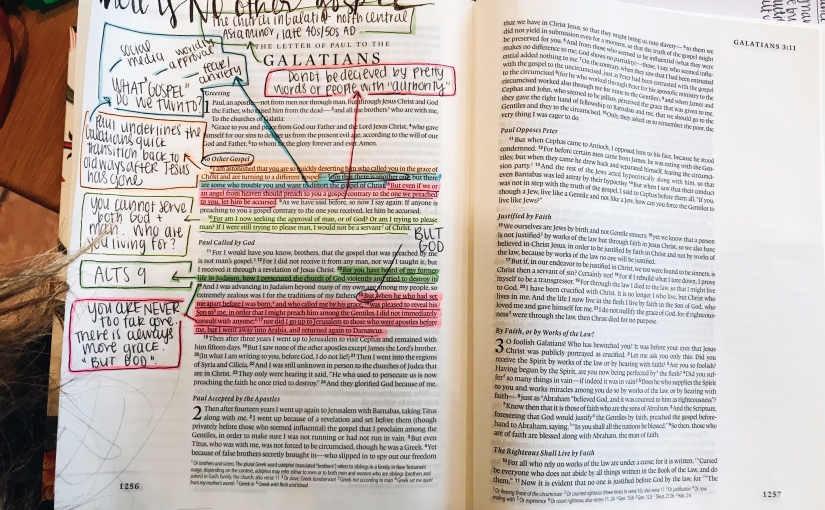


One thought on “How I Study the Bible”